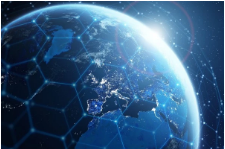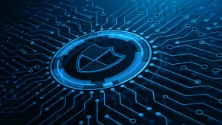10 IoT Companies to Watch in 2018
SAN JOSE, Calif. — The Internet of Things is so broad that it covers nearly every company whether they are in tech or not. Here’s my list of a few established and startup companies that I think are worth watching as barometers of IoT generally or some strategic part of it.
General Electric
Formed in 1889 by Thomas Edison, GE is one of the largest companies in America, and I’m sure that it can be bureaucratic and slow-moving. But I have seen GE embrace IoT as a way to reinvent itself and stay relevant.
In early 2014, GE was one of the founding members of the Industrial Internet Consortium that writes guidelines for bringing IoT to the factory floor. It has reshaped many of its products from jet engines to programmable logic controllers to give them new life as smart, networked products that generate data flows that are seen as valuable as the products themselves.
Indeed, GE aims to be an arm’s supplier for industrial IoT with a suite of products launched in late 2016. At its core, GE’s Predix software aims to sift the big data stores that industrial IoT will generate with the latest neural network technologies, helping companies search for nuggets of insight.
Schneider Electric
Like GE, Schneider is an old tech company in the old business of electricity. And like GE, it is embracing IoT as a way to energize its business and the business of its customers. In May 2016, Schneider announced an IoT cloud service linking offerings across its portfolio of electrical switches, breakers, and distribution products.
The company has made IoT a priority for top execs who see it reshaping the products and business models that it offers. Likewise, its engineers are making hard choices about the technologies that it backs, such as Zigbee for factory floor mesh networking, evangelizing others to follow them.
Here are some of my picks of established companies to watch outside of the OEM world in components and channels.
ARM
As the dominant player in microcontroller technology, the IoT is ARM’s battle to lose — and so far, it is fighting with vigor. Early on, the core designer identified security as the weak underbelly of IoT and set out on a multi-year journey to build a portfolio of security options for its customers.
At its last annual event in October, ARM’s technical fellows gathered to share their thoughts about how IoT will impact the long-term future of everything from MCUs to memory, sensors, radios, and packaging. Clearly, they aim to stake out leadership positions in these fields.
Robert Bosch
At a time when the number of companies building semiconductor fabs is shrinking, Robert Bosch raised eyebrows in June with its plan to plunk down $1.1 billion on a new fab — the biggest investment in its 130-year history. The Dresden plant will make MEMS, targeting the expanding footprint of the IoT.
The new fab won’t be up and running until 2021. Nevertheless, it is a sign that Bosch is betting a big chunk of its patient capital on IoT.
In the last few years, smartphones made sensors sexy. IoT will spread this market in every direction. There will be plenty of room for innovation for Bosch’s wide and growing set of rivals. But if you want a view of this segment from someone not blinkered by the next fiscal quarter, look to the folks in Stuttgart.
The Channel
There is no one company to watch in the distribution channel regarding the future of IoT — and that is part of the problem. For IoT to reach its potential, there will need to be dozens, if not hundreds, of systems integrators pulling together the nodes, networks, gateways, servers, and applications needed to serve companies in different markets and geographies.
Companies such as Accenture, Deloitte, and IBM will help many top-tier players move into IoT. But the many more second- and third-tier companies need partners, too. I suspect that they will be served by a small army of sometimes local specialists that are slowly emerging, many of which may never have or need broad global reach or recognition.
In the meantime, distributors are seeking their role in IoT. Both Arrow Electronics (the publisher of EE Times) and rival Avnet have put interesting stakes in the ground over the past couple of years.
Arrow’s bid on Jan. 2 to acquire India-based eInfochips is an interesting step in the direction of becoming a systems integrator. Today, distributors generally supply all of the hardware pieces, but they shy away from the customer software that ties it all together, delivering the ROI. As the Londoners say in their subway stations — mind the gap!
Startups often aim to fill gaps left by traditional companies. In this way, they indicate potential technology and market hot spots.
For that reason, I will be watching a number of IoT startups this year. The best — or, at least, luckiest — of them will get acquired by companies trying to fill those gaps.
Riot Micro
Riot Micro stands in a particularly gutsy spot, competing with the likes of Qualcomm and other cellular baseband chip suppliers. It created an ultra-low-power chip to run a subset of the LTE protocol stack that it developed.
If the startup can get its chips tested and qualified by carriers before Qualcomm, et al., can respond, it could go from zero to a significant place in the M2M market. Meanwhile, it could serve as a bellwether for carrier adoption of the new cellular IoT standards — Cat M1 and Narrowband-IoT.
zGlue
Advanced packaging is a key accelerator given the slowing pace of Moore’s law in high-end chips, and now it also is becoming a key ally for the IoT.Startup zGlue underlined this opportunity with its trailing-edge interposer with integrated passives.
It aims to enable a class of low-power, low cost SoCs with its 3,000 programmable pins and 100-MHz interfaces. Well worth watching.
ETA Compute
Forget sub-watt processors; ETA Compute aims to enable a generation of sub-milliwatt chips that can crank out useful work. The company’s Dial architecture enables cores to run at 0.25 V, potentially delivering a five-fold improvement in MIPS/watt compared to today’s MCUs. At last check, they were still pushing beyond proofs-of-concept, but whether they get traction or not, this is the kind of design thinking that the IoT needs.
Bebop Sensors
This startup invested the last several years refining a process to make fabric-based pressure sensors from materials ranging from artificial silk to Kevlar and denim. They target everything from car and wheelchair seats to data gloves for VR gamers and factory-floor workers, some with customizable haptic feedback.
It’s still early days for the 20-person company that could be a significant enabler for wearables and other IoT uses. It aims to raise up to $5 million this year to fund production of some of its designs and R&D on others.
TrackNet
This startup aims to take the LoRa network into both industrial and consumer markets for asset tracking and other uses. It’s worth watching for two reasons: LoRa is one of an emerging class of low-power wide-area networks opening up new use cases. Also, its founder was a lead designer on the first two generations of LoRa chips at Semtech and has a deep understanding of both the technology and the nascent market sector.
在线留言询价

5G IoT Satellites Countdown for Takeoff

IoT Merging Into Data-Driven Design
- 一周热料
- 紧缺物料秒杀
| 型号 | 品牌 | 询价 |
|---|---|---|
| TL431ACLPR | Texas Instruments | |
| RB751G-40T2R | ROHM Semiconductor | |
| BD71847AMWV-E2 | ROHM Semiconductor | |
| CDZVT2R20B | ROHM Semiconductor | |
| MC33074DR2G | onsemi |
| 型号 | 品牌 | 抢购 |
|---|---|---|
| BU33JA2MNVX-CTL | ROHM Semiconductor | |
| STM32F429IGT6 | STMicroelectronics | |
| BP3621 | ROHM Semiconductor | |
| ESR03EZPJ151 | ROHM Semiconductor | |
| IPZ40N04S5L4R8ATMA1 | Infineon Technologies | |
| TPS63050YFFR | Texas Instruments |
- 周排行榜
- 月排行榜
AMEYA360公众号二维码
识别二维码,即可关注


请输入下方图片中的验证码:
























